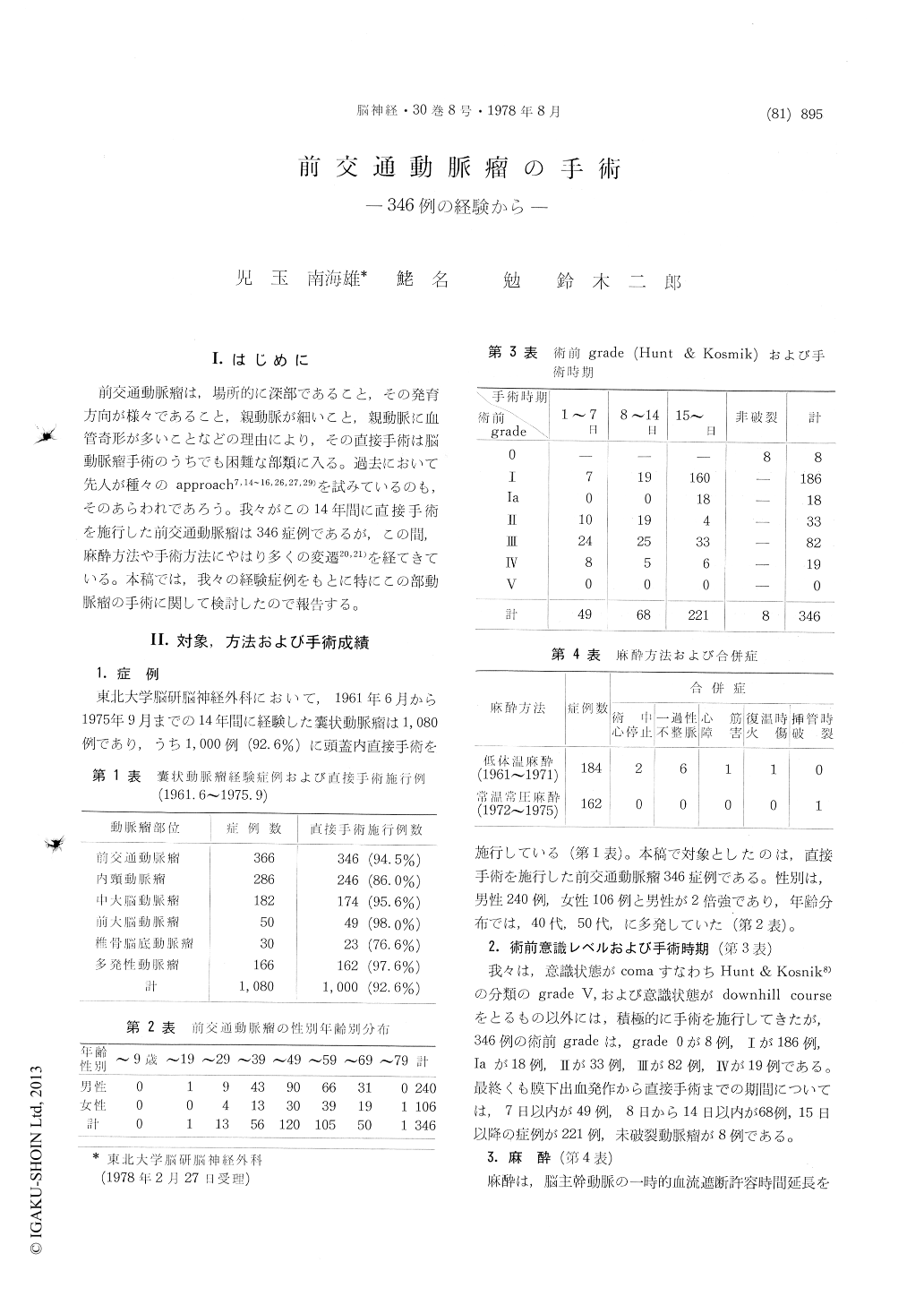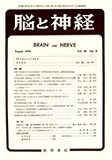Japanese
English
- 有料閲覧
- Abstract 文献概要
- 1ページ目 Look Inside
I.はじめに
前交通動脈瘤は,場所的に深部であること,その発育方向が様々であること,親動脈が細いこと,親動脈に血管奇形が多いことなどの理由により,その直接手術は脳動脈瘤手術のうちでも困難な部類に入る。過去において先人が種々のapproach7,14〜16,26,27,29)を試みているのも,そのあらわれであろう。我々がこの14年間に直接手術を施行した前交通動脈溜は346症例であるが,この間,麻酔方法や手術方法にやはり多くの変遷20,21)を経てきている。本稿では,我々の経験症例をもとに特にこの部動脈瘤の手術に関して検討したので報告する。
In the past 14 years, 1000 cases of aneurysms were submitted to surgical operations without using microscope. In this report 346 cases of anterior communicating artery aneurysms were studied.
The operative result at discharge was as follows ; 19 cases (5.5%) were dead, 27poor, 39fair, 64good and 197 excellent. In the follow-up, out of 300 cases 29 were dead (16 were related to the opera-tion), 7 were poor, 13 fair, 26 good and 226 excell-ent. Out of 19 dead cases during hospitalization, 14 were operated within two weeks after SAH. Ten out of 14 cases operated within two weeks died due to vasospasm and all these 10 cases were oper-ated between five to 11 days after SAH.
These results and results of ultra-early surgery on other sites of aneurysm suggested that the surgery shoule be avoided on the cases from third to 10th day after SAH. After the 3rd day, the operation should be decided by taking vasospasm into considereration.
If the SAH attack is a mojor one accompanying loss of consciousness more than one hour, the oper-ation should be postponed until the 14th day. If the SAH attack is a moderate one accompanying loss of consciousness within one hour, it should be postponed until the 9th or 10th day. When the SAH attack doesn't accompany loss of consciousness, the surgery can be done any time. If stiff neck is obvious, it should be performed on the 9th or 10th day.
Our approach for anterior communicating artery aneurysms is a interhemispherical approach following the bifrontal craniotomy. Hypothermic anesthesiaaround 27℃ was used in order to prolong the tem-porary occlusion time until 1971. Since 1972, 500~800ml of 20% mannitol was applied intravenously for preventing the infarction following the tem-porary occlusion under the normothermic general anesthesia.
Details of the operative records of 346 cases were analyzed and our operative method, technique and technical points were discussed.

Copyright © 1978, Igaku-Shoin Ltd. All rights reserved.


